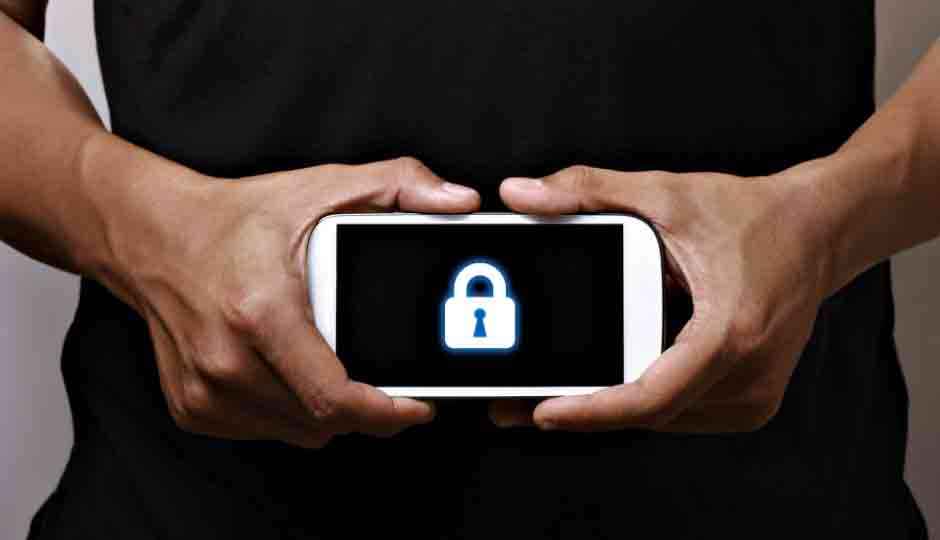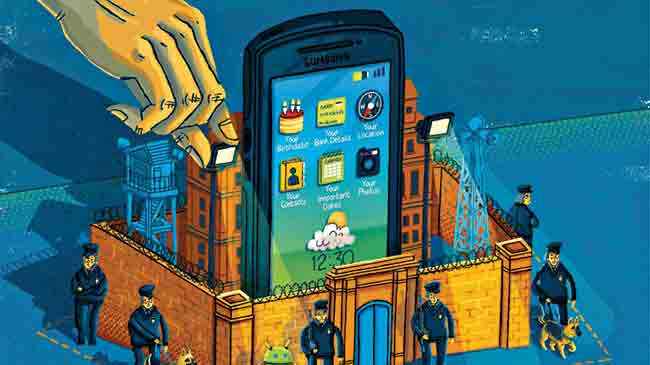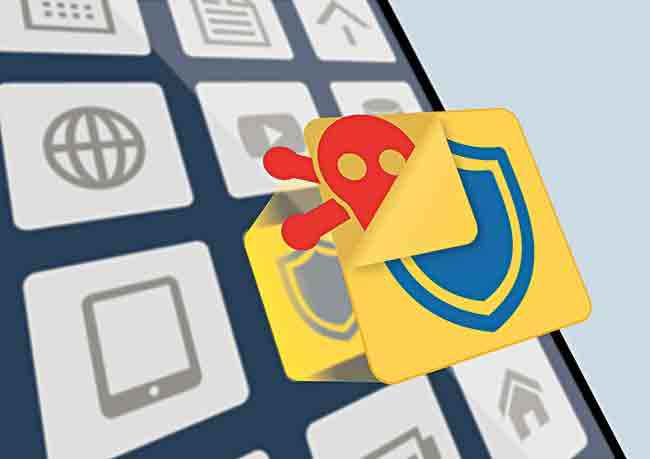How to secure your Android smartphone
The do and do-nots to ensure the online and offline security of your beloved android devices

We now live in a world where not owning a smartphone is considered rural and ancient. Smartphones have taken the world by storm. And the harbinger of this revolution is the popular and almost undisputed Operating System, Android. It’s open source and that is one of its biggest strengths. But we live in the times of Mr Robot and NSA. To cut things short, it wouldn’t be wrong to say that anything and everything is accessible if the right tools are used. So, in such a world, one must know how to protect themselves from the likes of hackers and those with malicious intent. One should not underestimate the impact and magnitude of such attacks. For instance, there was this case when a group of German Hackers hacked a country’s voting machines to tamper with the election results. This is where the world of hacking gets ugly and must be acknowledged as a real and constant threat.
 Survey
SurveyBut we've got you covered. We shall tell you about simple ways in which you can protect yourself from such attacks and the measures to be taken which are surprisingly simple. Let us begin
Types of attacks
Basically, you could be subjected to intrusive danger in two ways, either physically ‘hacked’ in which a menacing agent might snoop into your privacy by breaking into your phone. E.g. knowing your password. And the other way would be where a particular vulnerability in software on your smartphone is exploited. Take, for example, a web-browser is exploited when a web page opens up simultaneously downloading some unknown application on your phone ,which, in turn, downloads tonnes of malware that you never even asked for.
Protect you android phone from all kinds of attacks
Tips and tricks
Passwords
We all have passwords on our phones. A password can protect your privacy and keep all your important data private. Your phone stores the password for various social accounts like Facebook, Twitter, etc., and sometimes, more important ones like passwords for your online wallets and internet banking portals. But the basic password system can be bypassed on almost all devices, and all your personal information accessed. So here are some precautions you can take to make sure your phone and all your social accounts are ‘hack safe’.
1. Not Saving passwords
It is as simple as it sounds. The next time a web page prompts you to save passwords – decline. Because your passwords can be stolen via simple phishing pages or even by accessing the cookies that the web page stores. Also, if you save passwords and if someone was to hack your phone or gain access to it, what’s to stop them from using all your social password to learn more about you and then use your payment passwords to make financial transactions from your accounts? A lot of people have fallen prey to such malicious attacks and have been robbed online. It might seem a little paranoid to some – to those people, I say, better safe than sorry.
2. Use Strong Passwords
Most of the websites that require you to save passwords will require you to have long alphanumeric passwords (at least 8-12 characters long). And it is a necessary practice. If you have simple passwords, they can be bypassed by social engineering hacks or by using something as simple as permutations and combinations. A lot of people with bad intent invest a lot of time in trying to figure out what passwords could some people be using. So it is much safer and better to have a password that is not predictable, unlike your birth date or wedding anniversary or your maiden name. We can’t stress how important it is to have a strong password.
3. Android built-in security
Android OS knows how important your security is for you, so it comes with a strong secure built-in security system. You might have noticed that in the 'Lock Screen' section of your settings, there are various types of locks that you can use to secure your phone, ranked according to how secure they are with 'Swipe' being the least and 'Password', the alphanumeric option, being the most secure. The most commonly used lock type is probably the Pattern lock which can be very easily broken into. Instead of going for that, we recommend that you use this security provision to the fullest by selecting the alphanumeric option. Unless you have more advanced options like fingerprint scan and even facial recognition on some devices. Use them, as you cannot be secure enough. After all, this is your phone and personal information we are talking about.
Your phone is like a security locker for all your information that you wouldn’t want robbers getting into
Applications
Google Play store blew the world away when it came out on Android. Eventually, hundreds of games like Angry birds and apps like Facebook and Instagram were at your disposal. Google has always been a pioneer of the ‘free for all open source’ movement. It consistently encourages developers to experiment and test their products out at a global level. However, this coin too has a flipside. Google Play store might be the biggest online marketplace for apps, but it is not the only one. Although the usual Android phone is configured by default to NOT allow downloads from unknown sources, it is common practice for this setting to be changed by enabling 'Developer options'. That being said, even Google Play store may not be entirely safe, as it might sometimes serve malicious apps, cleverly disguised to look harmless to an unsuspecting user. These apps can cause a lot of trouble and put your online security at risk in innumerable ways. So here are certain necessary precautionary measures you must take
1. Backup
Taking a secure backup is a smart practice because this way, even if your important files and folders are affected by some kind of malicious software, you can always keep your data safe on the cloud. And there are several good services to do this. However, don’t choose services that are known upload all your data without your explicit permission or those that do not use password protection. Also, do make sure that the provider is reliable and has a good record with respect to downtime, security etc. Usually, such features are highlighted on any platform where this service is available. Some good secure services are Idrive, Sugarsync, Crashplan etc.
2. Security options
Use the security options if the app provides any. Even if someone broke into your phone and now expects to have access to all the applications, you can have security passwords explicitly set for each app that supports it. A lot of apps come with a built in PIN lock provision. Even if they don’t, there are certain apps like APPLOCK which allows you to protect any access to your applications using a security password. It is recommended to have multiple security layers, so that even if your phone gets lost or broken into, you don’t have to worry about anyone accessing your private data on apps. This is very important, especially with apps with your bank account details such as an e-commerce application.
3. Google Play store
Don’t just download your apps from any unknown source. Just dont. Most of the online app vendors don’t have thorough safety checks and are loaded with advertisements and confusing design. Even if the source is known, it is better to stay away from applications which don’t have a lot of downloads. Even some apps on Google Play store are loaded with unwanted advertisement which might redirect you to malicious websites. And if there is any such application that you are using, don’t provide any important information to it. They might seem normal, until suddenly your device begins to have issues and then it will probably be too late to do anything. Remember, the Play store shares download data and reviews from other users for a reason. Go through them, and decide after that whether you want the application or not..
There are a lot of people looking forward to break into your phone by using otherwise harmless looking applications
Network
The internet is filled with opportunistic people who want to scam their way into your phone and get your personal information. It is simply not possible to not be on the internet either. However, if you take some easy safety measures, you can secure the network you are on and thus, your Android device.
1. Be on a secure network at all times
If you're on a Wi-Fi service, make sure it is password protected. People can access your device if you are on an unprotected network. Also, avoid using unknown public Wi-Fis. Free Wi-Fi, as tempting as it might seem, comes with a lot of danger. Hackers can use simple applications and snippets of code to break into everyone's devices on a specific public network. But there is a way to make sure this doesn’t happen. Use applications like HideNinja VPN to make sure your outgoing network is always encrypted with a digital signature, hence killing the chances of a potential security compromise.
2. Use multiple accounts
If you share a device with someone, e.g. a tablet or a phone, you have the option to create multiple accounts to make sure that your data isn't shared. This can easily be done by going to Settings->Accounts section on your Android device. This way you can easily share the device with other people and have separate passwords and preferences for separate accounts. You can also find apps on the Play store that help you manage different accounts on your Android device. For example, SwitchMe or Parallel Space. There are even apps to create multiple social accounts on the same device for apps like WhatsApp and Facebook. This way, if you are sharing your device with someone, you can make sure that your data stays truly private.
3. Security apps
There might be many malicious apps out there but genuine apps that can save you from such applications exist too. The best example is probably AVG. It is available as a free bundle, while there is also a paid version with some better features. It comes with basic security options like not letting you download from unknown sources, tracking your phone in case it goes missing, etc. Also, it regularly performs thorough checks to see if any malware exists on the phone. There are several applications like this which you can use. But be sure only to use a trusted application, as you definitely don’t want to get infected by an application that was meant to protect you in the first place. So here are some trusted applications that you can use
- AVG
- AVIRA antivirus
- Norton antivirus
- AVAST mobile security
- CM Security
Just be sure to download security apps from secure sources
When you lose your Android device
When you lose your phone or it gets stolen, it almost feels like the world has come crashing down, doesn't it? Our lives depend on our phones through our contacts, passwords and applications. The only worse thing that could happen is your stolen device landing in unwanted hands. This is a big issue for all Android users in general. However, there are certain applications now that can help you locate your stolen phone using GPS SAT-NAV or even wipe off all your data remotely. Here are some measures you can take in case you lose your Android device
1. Wipe your data
In case your phone gets stolen and you are certain you are not getting it back, you must erase your data immediately using a remote data wipe mechanism.
You can follow the following procedure as it is mentioned on the Google official forum:
“Select Remote Wipe when a device is lost or stolen to erase all data on the device and to do a factory reset. You can remote wipe an Android device with the Google Apps Device Policy app installed and any supported mobile device with Google Sync configured. All data is erased from the device (and SD card, if applicable), including email, calendar, contacts, photos, music, and a user’s personal files.
Note that Remote Wipe erases the device’s internal storage. Your user’s device must already have Device Policy (or Google Sync) configured. You cannot install Device Policy and run Remote Wipe retroactively. For Android 2.3+ devices, Remote Wipe also erases the device’s primary SD card”
Plus you won’t have to feel bad about having to erase all this priceless data if you have followed our advice and have taken a cloud backup of your device. A little bit of planning goes a long way.
2. Remote Track your lost phone
If you lose your phone and want to track it using some other Android device, you can either use applications like AVG security system or you can download additional apps like Find My Phone for Android to track its location using GPS.
You can even do this without any extra application as well. You just need to have a Google account and your Android device must be connected to internet. Any Android device is equipped with a tool called ADM (Android Device Manager) which can be used if all the above conditions are met. Simply Google “Where is my phone” and your phone’s location shall be displayed on Google maps. It works most of the time, just be sure that ADM is activated on your device.
Be sure to diagnose any problem your phone and take measures in case it is acting up
Conclusion
Last but not the least, make sure your phone is always safe with you and stay cautious about pickpockets. Smartphones are an integral part of our lives and now you are equipped with the knowledge to fend off hackers and malicious attacks targetting it. Android security options combined with the above tips and sufficient caution – that's how you secure your Android smartphone.




